|
Miscellaneous Experimental Tubes |
||
| The tubes shown here are all experimental or prototype tubes from the 1920's and 1930's. I would welcome an email from anyone who has information about any of these tubes. | ||
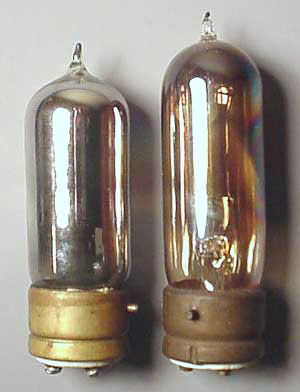 |
||
| Shown at the right is an experimental tetrode (two grid) tube which resembles the standard UV-199 shown at the left but is slightly longer. It is clearly marked with the GE logo etched into the glass, and the rainbow coloration of the getter indicates that it originated from the GE Nela Park plant near Cleveland, Ohio, probably circa 1924. Since a tetrode requires five external connections, they used the brass base as the fifth contact. | ||
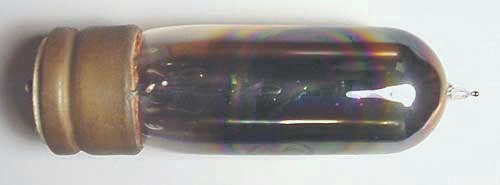 |
||
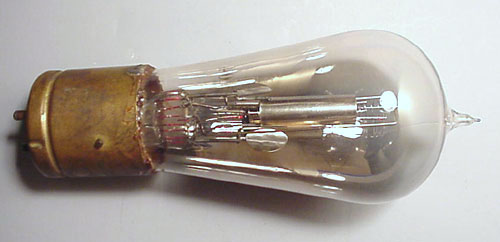 |
||
| This tube (above and below) is also a tetrode design. The bulb resembles that of a UV-202 though it is an inch longer overall (about 6 inches, vs. 5 inches for the UV-202). The brass base was apparently salvaged from a UV-200 type tube, as those markings are still clearly visible. There is a 5 digit number (12304) etched into the glass, a practice that was typical of Western Electric. So, in spite of the RCA base, I believe that this is a Western Electric tube, and it would date to the early to mid 1920's. | ||
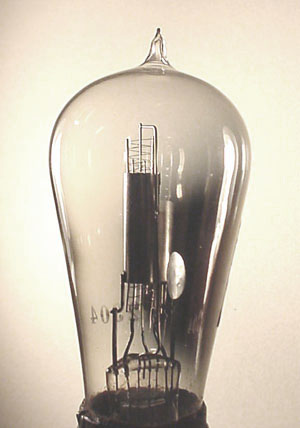 |
||
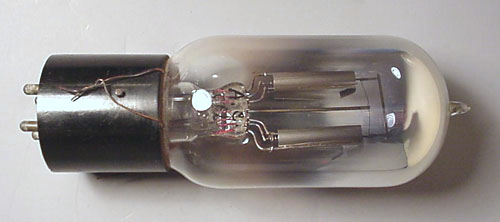 |
||
| The tube shown above contains two
triodes with a common filament. It is mounted on a standard
short-pin UV base which bears no markings whatsoever. Three wires
emerge from the base to provide the additional connections. The
inscription "A. C. (1)" is visible inside the tube in black
ink. This tube was made by General Electric in
the 1923-1924 period, and was an attempt to build an amplifier tube using an
AC-powered filament. It's structure is very similar to the developmental UV-213, which was a full-wave rectifier that was later marketed as the UX-213. In more robust form, it became the UX-280, and eventually the 80. The UV-213 appears to be nothing more than this tube without the grids. |
||
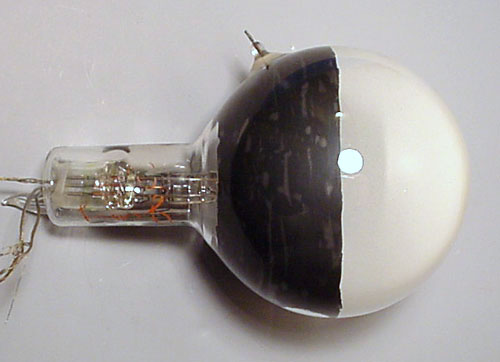 |
||
| I have no idea what this tube was intended to do. At the center of the spherical section is a tiny filament such as might be found in a flashlight bulb. The white area is a very thin (you can see through it) phosphor coating and the gray area is a conductive coating connected to the terminal on the side of the bulb. The filament lights quite nicely on a 1.5 volt battery, and applying several hundred volts to the conductive coating causes the phosphor coating to emit a faint green glow. The spherical section is about 3 1/2 inches in diameter, and the overall length is about 6 inches. | ||
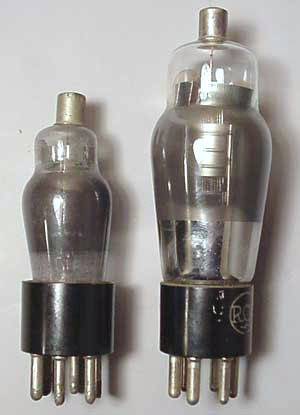 |
||
| This odd little tube must be an attempt to compress a standard tube design into a smaller package. It is shown above next to an ordinary RCA 6D6 tube. It may very well be a precursor to the metal tube design that was introduced in 1935. The only clue to the origin is the standard 6-pin base which has the same licensing notice on the bottom as was used by RCA. There are traces of some stamped markings on the base (in silver paint) that were scratched off so that nothing is readable. No attempt was ever made to fill the gap between the glass bulb and the base, so the bulb is free to wobble around on the connecting wires. It is a pentode, and it measures about 4 inches in length. | ||
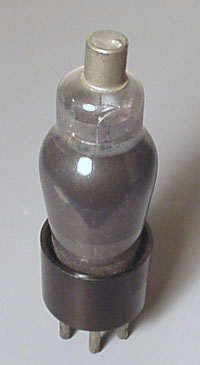 |
||